Andrew - let us start with a simple RLC-bandpass (series L-C and a grounded resistor R). I think, such an example will lead us to an anser for your problem.
The transfer function is simple to find (s=jw):
\$H(s)=\frac{sRC}{1+sRC+s²LC}=\frac{\frac{sR}{L}}{\frac{1}{LC}+s\frac{R}{L}+s²}\$
An interpretation of this complex equation will (probably) answer your question.
1.) We know that the denominator of a transfer function is identical to the "characteristic polynom" of a second-order linear system. Hence we try to find the roots of this polynom (identical to the poles of the transfer function):
\$\frac{1}{LC}+\frac{R}{L}s+s²=0\$
with \$s_{1,2}=-R/2L \pm \sqrt{(R/2L)^2-1/LC}\$
Because we are interested in frequencies (knowing s=a+jw) we rewrite the result:
\$s_{1,2}=-R/2L \pm j\sqrt{1/LC-(R/2L)^2}\$
Hence we have a complex pole pair \$s_1=Re+j(Im)\$ and \$s_2=Re-j(Im)\$ with
real part \$a_o=-R/2L\$ and imag. part \$w_o=\sqrt{1/LC-(R/2L)^2}\$.
(\$a_o\$ and \$w_o\$ are the "eigenvalues" of the system; note that here \$w_o\$ is NOT the resonant frequency).
This complex number describes the position of the pole pair in the s-plane.
2.) It is interesting to find the magnitude of the vector from ther origin to the pole and it is easy to show that \$\sqrt{a_o^2+w_o^2}=1/\sqrt{LC}\$.
This frequency is called "pole frequency": \$w_p=1/\sqrt{LC}\$.
Interpretation: Going back to the original transfer function (example) , we see that at \$w=w_p\$ the denominator has its MINIMUM (the real parts add to zero) and the transfer function \$H(s)\$ has its MAXIMUM. Hence, for a bandpass, the pole frequency \$w_p\$ is identical to the midfrequency \$w_p=w_m\$.
3.) Now we want to analyze and describe the position of the pole. For this purpose, we use the angle phi between the real axis and the vector \$w_p\$. And we define a quality factor \$Q_p\$ - knowing that for \$a_o=0\$ (pole on the imag. axis) we have no damping with \$R=0\$. The circuit will oscillate and we allocate an infinite \$Q_p\$ value to this case.
This allows us to define: \$Q_p=\frac{1}{2\cos{\phi}}\$ with \$\cos{\phi}=|a_o|/w_p\$.
Interpretation: Again going back to the original function (example) we see that in this case \$Q_p=\frac{1}{2\cos{\phi}}=w_p/2|a_o|\$ and \$w_p/Q_p=2|a_o|=R/L\$
This expression \$R/L=w_p/Q_p\$ appears in denominator as a factor for the linear s-term as well as in the numerator.
4.) Knowing that each second-order bandpass has the same form (active or passive, excluding the gain \$A_{max}\$ at \$w=w_p\$) we can generalize these results and find the general second-order bandpass function:
\$H(s)=A_{max}(\frac{s(w_p/Q_p)}{w_p^2+s(w_p/Q_p)+s^2})\$
Comment 1: Remember, for a band pass we have midfrequncy \$w_m=\$pole frequency \$w_p\$ (don`t mix this with \$w_o\$ as given in your task description).
Comment 2: The definition of the pole Q (\$Q_p\$) as given above has the following advantage: For a second-order bandpass the pole Q is identical to the "classical" quality factor \$Q_p=Q=3dB\$-\$\frac{bandwidth}{midfrequency}\$. Example: For \$\phi=0\$ we have a double real pole with \$\frac{1}{2\cos{\phi}}=Q_p=Q=0.5\$.
Comment 3: It is rather easy to design each bandpass (active or passive) because it is only necessary to compare term-by-term the general transfer function with the actual transfer function (using the corresponding parts values of the circuit). This comparison gives the necessary design equations for \$A_{max}\$, \$Q\$ and \$w_p\$.
